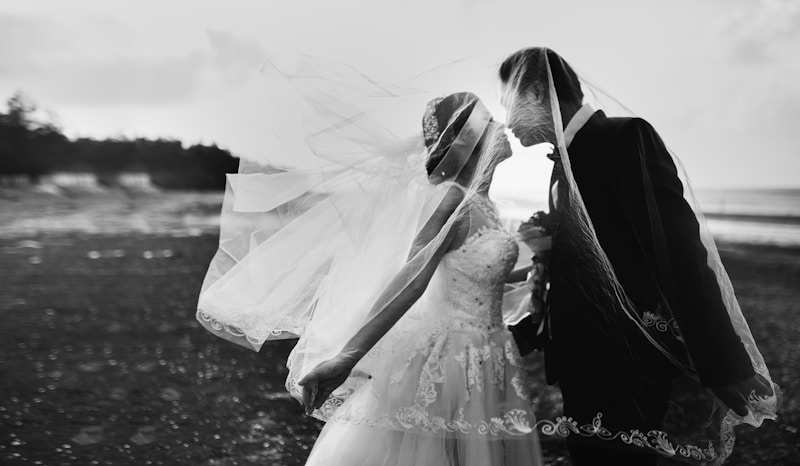Exploring Regional Wedding Variations: A Glimpse Into Diverse Traditions
Weddings are a universal celebration of love, but the ways in which couples express their vows and commemorate their unions vary significantly across different cultures and regions. Understanding these Regional Wedding Variations offers a rich tapestry of traditions, customs, and practices that are intrinsic to a wedding's unique flavor. In this article, we will explore some fascinating regional wedding variations from around the globe.
Understanding Regional Wedding Variations
Every culture possesses distinct wedding traditions that are shaped by historical, social, and economic influences. These variations reflect the values and beliefs of each society. From the intricacies of attire to the rituals performed, each aspect holds special significance. Let’s dive deeper into some prominent regions and their unique wedding customs.
1. Weddings in India
Indian weddings are known for their grandeur, vibrant colors, and ceremonial richness. These weddings typically follow a multi-day format filled with various events, including the Mehndi (henna ceremony), Sangeet (musical night), and the main wedding ceremony, traditionally held under a beautifully adorned Mandap.
| Event | Description |
| Mehndi | A pre-wedding ceremony where intricate henna designs are applied to the bride's hands and feet. |
| Sangeet | An evening of music and dance where family and friends celebrate the upcoming wedding. |
| Wedding Ceremony | A sacred ritual, often including the Saat Phere where the couple circles a sacred fire seven times, signifying their vows. |
2. Weddings in Japan
Japanese weddings blend ancient Shinto traditions with modern influences. Couples often wear traditional attire, such as the Kimonos or Western-style gowns. The Shinto Ceremony involves rituals such as Sake Sharing, where the couple drinks sake from a shared cup, symbolizing their union.

3. Weddings in Italy
Italy offers a romantic backdrop for weddings, famous for its exquisite food and stunning venues. A Traditional Italian Wedding features rich symbolism, including the bride wearing a white gown, often with a veil. The reception often includes a multi-course meal, accompanied by lively music and dancing. A must-have is the Confetti, which, contrary to its sugary meaning, represents the couple's good fortune and fertility.
4. Weddings in West Africa
In West Africa, weddings are vibrant celebrations that can last several days. Traditional rituals vary by country and ethnicity but often feature bright attire, music, and dance. The Ghanaian Wedding is characterized by floral arrangements, traditional drumming, and the exchange of gifts called Bridal Money. The couple might also partake in a Traditional Libation ceremony to honor their ancestors.
5. Weddings in South America
In South America, weddings are joyous occasions celebrated with family and friends. Colombian weddings, for instance, often include a Ceremony of the Coins, where the groom presents coins to the bride, symbolizing his commitment and support. The couple may also have a lively reception featuring traditional folk music and dances.
Common Elements Across Regional Weddings
Despite the stunning diversity, some elements tend to be universal across various cultures:
- Attire: Wedding attire symbolizes cultural identity and traditions. In many cultures, the bride’s gown represents purity and new beginnings.
- Ceremonial Rituals: Almost all weddings include rituals that bless the union, whether through religious practices or cultural ceremonies.
- Feasting: Food plays a central role in celebrations. From sumptuous banquets to traditional cakes, meals bring families together.
- Music and Dance: Celebratory music and dance form an integral part of weddings, helping create an atmosphere of joy and togetherness.
FAQs About Regional Wedding Variations
What are some of the most unique wedding traditions worldwide?
Unique wedding traditions include the Jumping the Broom ceremony in African-American culture, where couples jump over a broomstick to symbolize their new union. Additionally, the Thai Water Pouring Ceremony signifies the cleansing of sins and the start of a new life together.
How do cultural backgrounds influence wedding customs?
Cultural backgrounds significantly shape wedding customs by instilling specific values, beliefs, and rituals. These factors inform choices around attire, ceremonies, and post-wedding celebrations. For instance, cultures with a strong communal orientation might have larger gatherings to emphasize family and community support.
Are there any common themes in wedding ceremonies around the world?
Yes, common themes include the exchange of vows or rings, blessings from family or religious figures, and celebrations with feasting and dancing. These elements aim to express love, commitment, and community.
Conclusion: The Beauty of Regional Wedding Variations
Regional wedding variations reveal the incredible richness of cultural practices and beliefs worldwide. Understanding these customs not only fosters appreciation for different cultures but also highlights the universal themes of love, commitment, and celebration. As couples consider their wedding plans, recognizing and incorporating personal and cultural heritage can enrich their special day, making it a tapestry of tradition and innovation.
Whether you're planning your wedding or merely fascinated by the art of marriage, remember that each regional variation tells a story, celebrating the journey of love uniquely and beautifully. Embrace the diversity of weddings and the beautiful traditions they encompass as you navigate your own path to saying "I do."